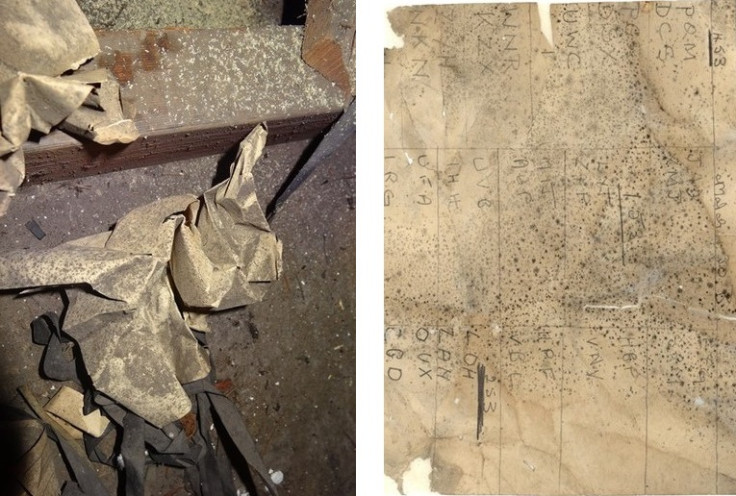Alan Turing Enigma Code notes found used as insulation in shed roof at Bletchley Park

Documents compiled by computer science pioneer Alan Turing during the attempts to break the Nazi's Enigma Code in World War Two have been found used as roof insulation in an out building at Bletchley Park.
The series of notes were found during the restoration of Hut 6, which housed mathematicians dedicated to interpreting the messages intercepted between the German army and air force.
"Discovering these pieces of code-breaking ephemera is incredibly exciting and provides yet more insight into how the codebreakers worked," said Ian Stander, chief executive of the Bletchley Park Trust.

"The fact that these papers were used to block draughty holes in the primitive hut walls reminds us of the rudimentary conditions under which these extraordinary people were working."
The papers have been cleaned and repaired and now form part of an exhibition called The Restoration of Bletchley Park, which includes teapots, bottles and a "time capsule" discovered during the restoration project.
It is the first example to be found of Banbury sheets, a process used by Turing to decode Nazi messages.
Wartime security rules meant that documentary evidence of the codebreaking process was meant to be destroyed, making these notes the only known example of this process.
"These are the actual documents used by codebreakers, and in terms of the codebreaking process they are pivotal," said Gillian Mason, a curator at Bletchley Park. "I can just see these people beavering away. There is a lot of pencil and crayon activity."
The value of the notes is unclear but a 56-page notebook of Turing's set to go up for auction this month is expected to sell for at least £1m.
During his lifetime Turing was credited with creating one of the first theoretical models of a general-purpose computer, as well as developing the concept of artificial intelligence.
© Copyright IBTimes 2025. All rights reserved.






















